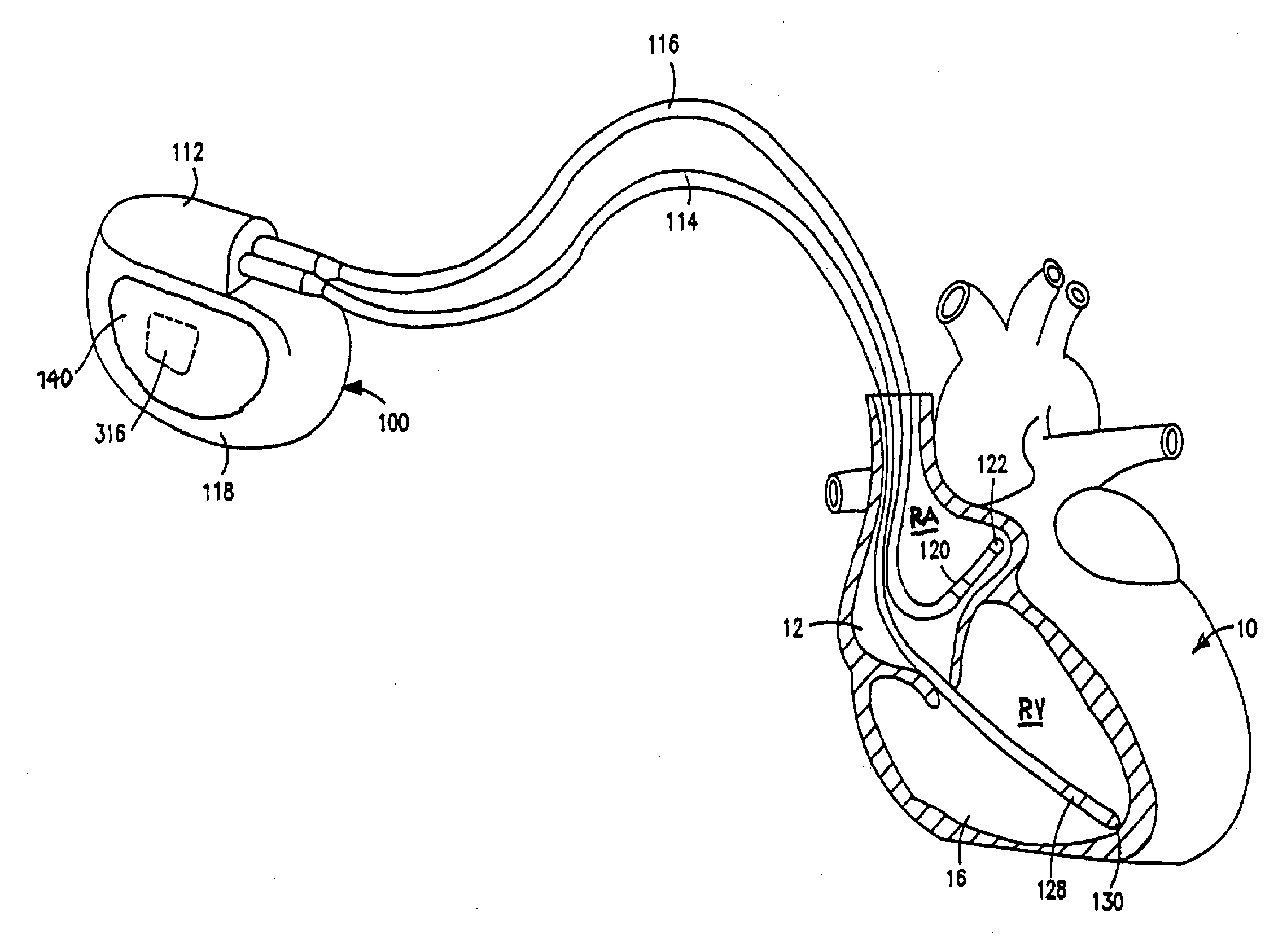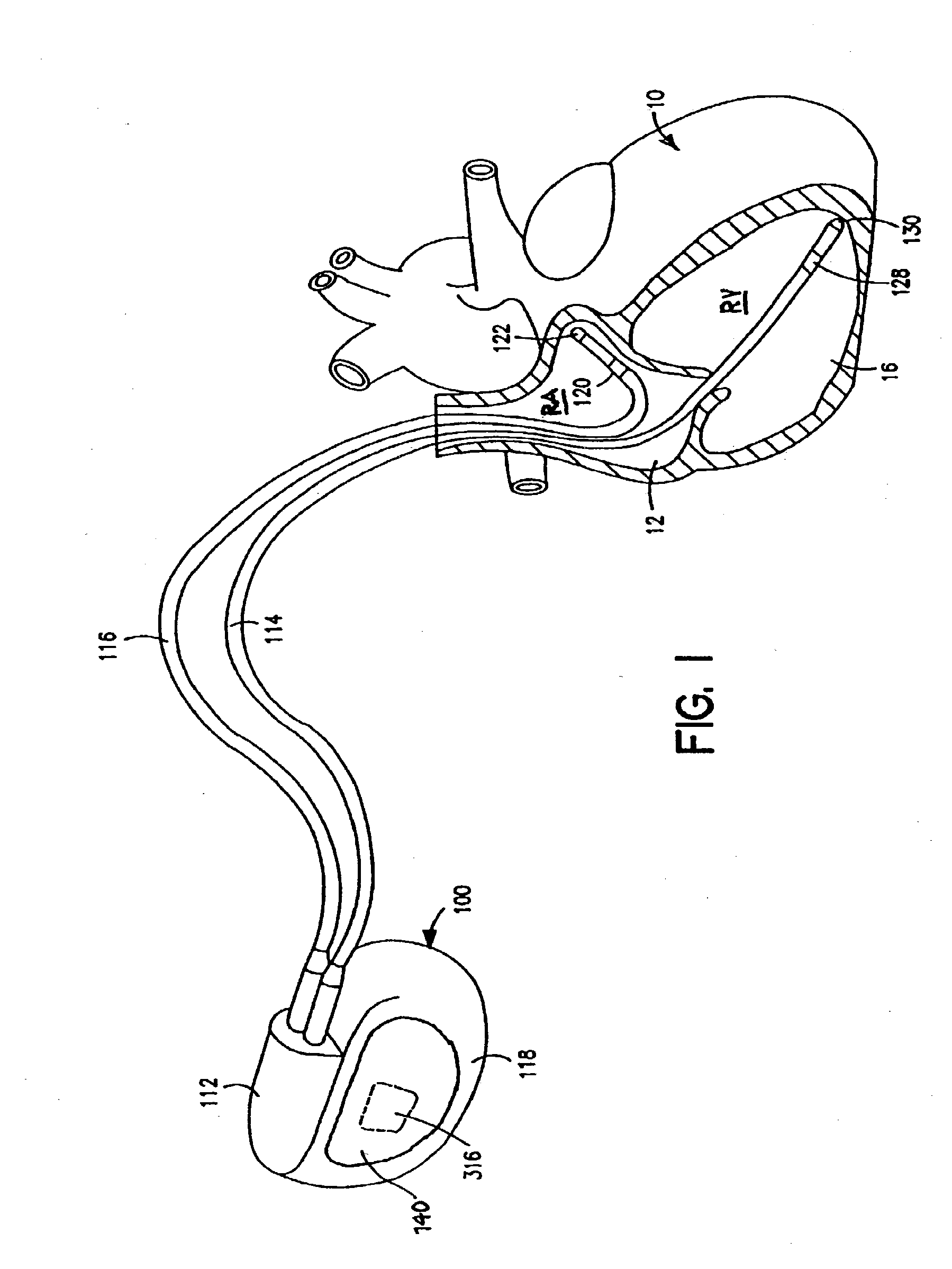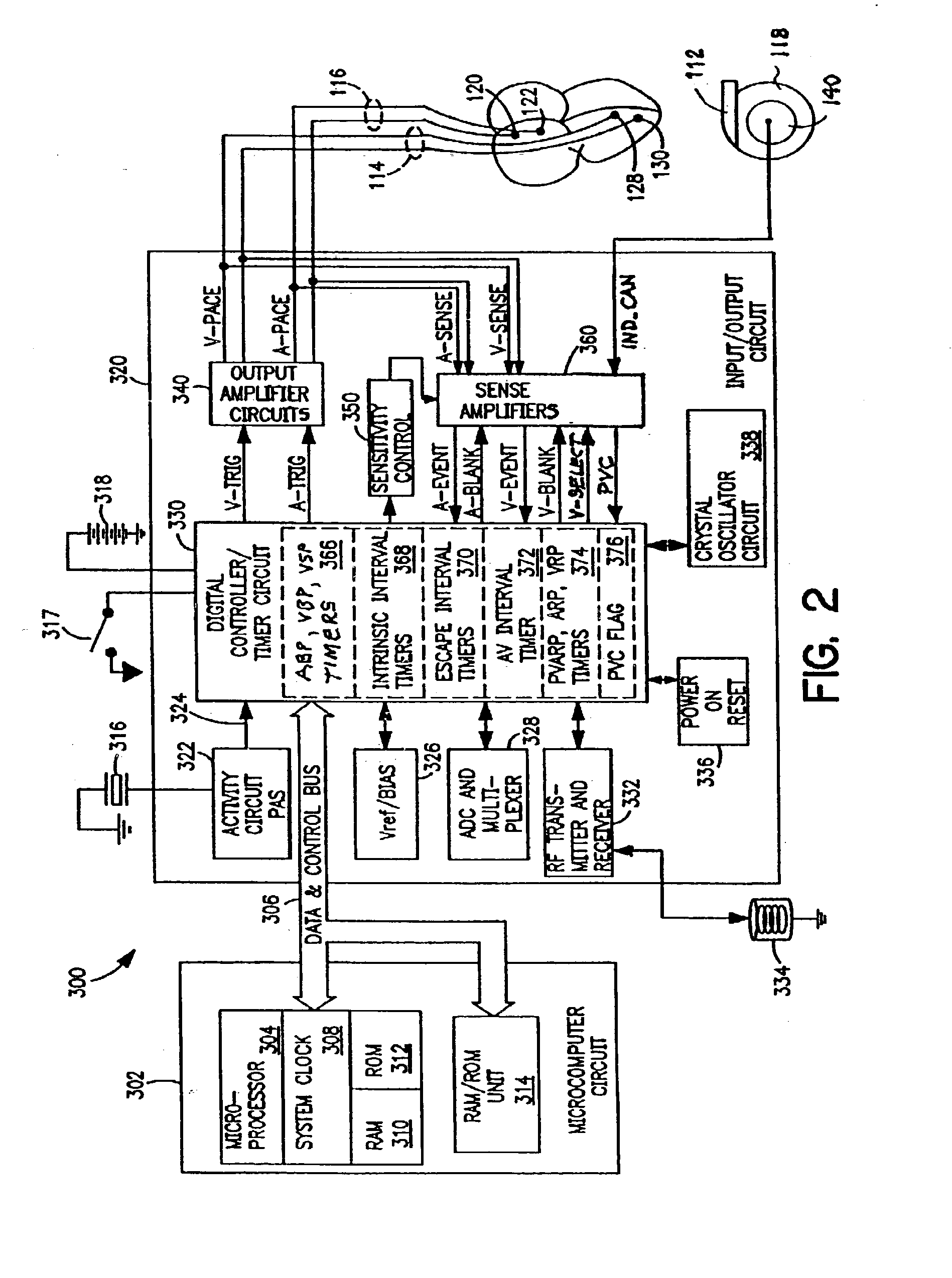Methods and apparatus for detecting ventricular depolarizations during atrial pacing
a ventricular depolarization and atrial pacing technology, applied in the field of atrial pacing synchronization and dual chamber pacing systems, can solve the problems of false declaration of a-events or v-events, inability to use sense amplifiers to detect capture or loss of capture (loc) of atria and ventricles,
- Summary
- Abstract
- Description
- Claims
- Application Information
AI Technical Summary
Benefits of technology
Problems solved by technology
Method used
Image
Examples
Embodiment Construction
[0056]In the following detailed description, references are made to illustrative embodiments of methods and apparatus for carrying out the invention. It is understood that other embodiments can be utilized without departing from the scope of the invention.
[0057]FIGS. 1 and 2 depict the external configuration and components of a typical implantable dual chamber pacemaker operating in a DDD, DDI, DDIR, or DDDR pacing mode or operating in an AAI or AAIR pacing mode to provide atrial pacing in the absence of an adequate atrial heart rate as long as ventricular sensing indicates normal AV conduction. Such a dual chamber IPG 100 and unipolar or bipolar atrial and ventricular leads 114 and 116 (bipolar leads are depicted), in which the present invention may be implemented is depicted in FIGS. 1 and 2. The dual chamber pacemaker IPG 100 senses and paces in the atrial and ventricular chambers, and pacing is either triggered and inhibited depending upon sensing of intrinsic, non-refractory at...
PUM
 Login to View More
Login to View More Abstract
Description
Claims
Application Information
 Login to View More
Login to View More - R&D
- Intellectual Property
- Life Sciences
- Materials
- Tech Scout
- Unparalleled Data Quality
- Higher Quality Content
- 60% Fewer Hallucinations
Browse by: Latest US Patents, China's latest patents, Technical Efficacy Thesaurus, Application Domain, Technology Topic, Popular Technical Reports.
© 2025 PatSnap. All rights reserved.Legal|Privacy policy|Modern Slavery Act Transparency Statement|Sitemap|About US| Contact US: help@patsnap.com



